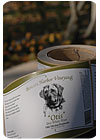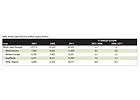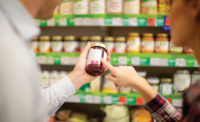

The best gains are expected in the world’s emerging economies, which already account for over 40% of global label demand by area. Label markets in developing countries will enjoy robust growth, fueled by generally healthy economies, rising populations and expanding consumer sectors increasingly able to satisfy their desire for foods, beverages, personal-care items, and other highly packaged consumer products. China, which recently surpassed Japan as the world’s second-largest label market after the United States, will continue to log double-digit demand growth. India and East European markets, such as Poland and Russia, also offer especially favorable prospects.
Traditional packaging uses are more mature in the developed economies of North America, Western Europe and (especially) Japan, where labels also face stiff competition from direct printing. Still, labels will find opportunities in new applications in inventory control, product security and others.
Pressure-sensitive labels, which surpassed wet glues as the leading label type in the late 1990s, will account for 55% of the global market by 2011. Gains have slowed in recent years, as growth markets such as wine and electronic security have matured, and plastic sleeve, in-mold, and wraparound labels have cut into pressure-sensitive strongholds such as beverage packaging. In terms of materials, plastic labels will continue to penetrate traditional paper applications, capturing nearly 30% of the world market by 2011.
For more information, contact Corinne Gangloff, The Freedonia Group Inc., 767 Beta Drive, Cleveland, OH 44143-2326; phone (440) 684-9600; fax (440) 646-0484; e-mail pr@freedoniagroup.com; or visit www.freedoniagroup.com.


